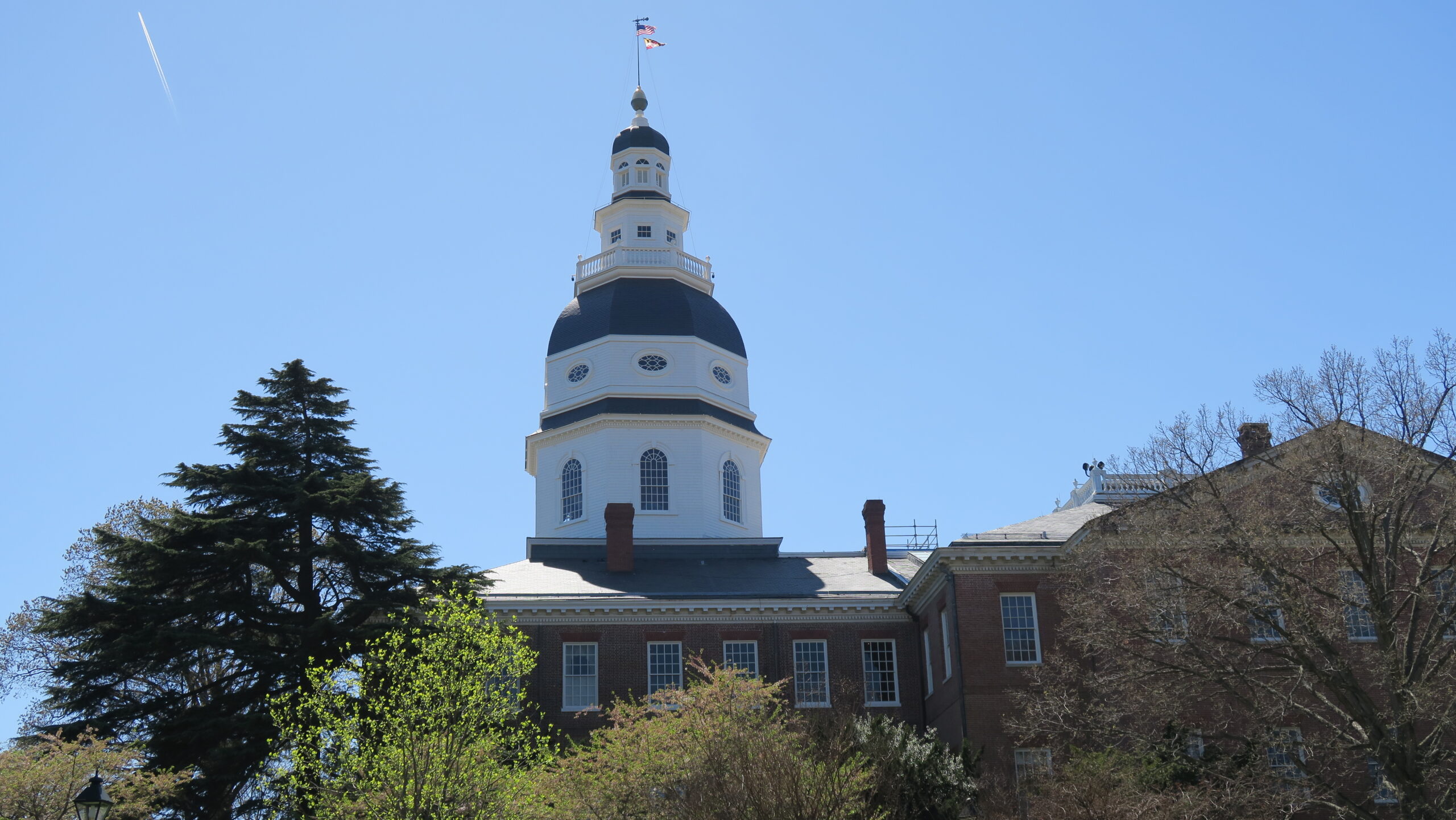
A view of the State House on the final day of the 2023 General Assembly session. Photo by William F. Zorzi.
Ben Franklin's wisdom on taxes
Originally published in Maryland Matters
Last month I joined countless Marylanders in filing my federal and state income tax returns.
As I did so, the timeless observations of Benjamin Franklin came to mind: “In this world nothing is certain except death and taxes.”
After the Maryland General Assembly adjourned, I suggest Ben was only partly right.
In Maryland, new state taxes, state tax increases, new state fees, and state fee increases are almost certain. The only uncertainties about them are when and how much.
Before the 2024 Maryland General Assembly adjourned for the year, this matter was discussed at length, but never fully settled. Some relatively modest tax and fee increases were approved, but none as large as or as far reaching as expected.
None will be approved throughout the balance of this year. The earliest formal discussions on any tax increases can happen is after the General Assembly reconvenes in January 2025.
Battle lines are already being drawn.
Proponents and opponents of tax increases are busy organizing and promoting their positions. Not surprisingly, there are stark and irreconcilable differences between them.
The Maryland Public Policy Institute recently released a statement headlined “Tax increases Are Never Inevitable.”
The statement includes the following messages:
“Maryland’s political leaders would have us believe the state is in a fiscal mess through no fault of their own and that the only solution is massive tax hikes that they’ve put on hold — for now. This narrative, however, both misrepresents the problem and ignores a real and preferable solution. When pressed, responsible lawmakers admit that the primary cause of the budget chaos at both state and county levels is the Blueprint for Maryland’s Future (a.k.a. Kirwan) education plan.
“The Spending Affordability Committee projected that budget shortfalls will increase substantially over the next five years due to the need for general funds to support costs related to the Blueprint. The recommended remedies are to minimize the enactment of new mandates, increase efficiency, and consider revenue options.
“Sadly, legislators seem focused only on that last tactic — i.e., tax hikes. But the Blueprint is not Holy Writ etched in stone. And tax hikes on hard-working Marylanders are not inevitable. Instead of pretending to have no way out, lawmakers could choose to alter the Blueprint’s mandates or eliminate it altogether.”
Supporters of Kirwan, especially the Democratic supermajorities in the General Assembly, and the state teachers’ union, have a much different view.
They support increasing state revenues to a level to ensure Kirwan is fully implemented as it was written when the current version was approved by the General Assembly.
They believe they have public support for that. They may be right.
A recent article in the Baltimore Sun had the following headline: “Majority of Statewide Voters Support Blueprint for Maryland’s Future.”
The article included the following.
“An overwhelming majority of Marylanders support the state’s ambitious Blueprint for Maryland’s Future education plan, according to a new poll done for The Baltimore Sun, the University of Baltimore and FOX45. Nearly three quarters of the 1,300 likely general election voters polled across Maryland said they supported the Blueprint. When the poll asked about potential changes to the plan to lessen its financial pressures on local [education] budgets, 55% said they supported making some reduction, such as cutting all-day prekindergarten programs (24%), or teacher pay raises (11%). However, 29% said they would not cut anything.”
The professional pollster who conducted the survey opined the results indicate “profound, widespread” support among voters for the landmark education plan, tempered by “a willingness to set adjustments.”
He further observed, “It’s very hard to argue against public education. The intent [of the Blueprint] tracks with the priorities of Maryland voters.”
I suggest the results of this survey, like the results of all surveys, only reflect public sentiment at a point in time. How durable those poll results are has yet to be seen.
The pollster did acknowledge one huge unresolved issue that cannot be ignored going forward. He said, “Local school boards will have to balance how to fund their school districts with meeting their Blueprint financial burden, which could force [school board] members to cut local initiatives. Will it force school boards to cut other things? That’s where the electoral equation changes,”
That is a key observation that leads to more certainty on discussions and debates on taxes and fees in Maryland.
Between now and January 2025, supporters and opponents of Kirwan will be aggressively engaged in efforts to inform, galvanize, and mobilize voters to support their respective positions ranging from maintaining Kirwan as currently written, adopting modifications to Kirwan and the necessity for and scope of revenue sources needed to fully fund implantation of whatever the final form Kirwan turns out to be.
Depending on the outcomes, those efforts may continue well beyond next year.
The writer is a public affairs and public relations consultant who lives in Easton.





